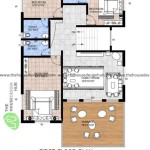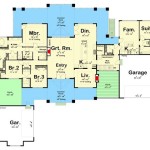Floor Plan Walk In Closet
The walk-in closet is a luxurious and convenient amenity that can add value and functionality to any home. Whether you're a fashion enthusiast with a vast wardrobe or simply someone who appreciates ample storage space, a well-designed walk-in closet can transform your daily routine and enhance your overall living experience.
When planning a walk-in closet, there are several key factors to consider to ensure it meets your specific needs and complements the overall flow of your home. Here's a comprehensive guide to help you create a floor plan that maximizes storage, optimizes space, and reflects your personal style:
1. Determine the Size and Location
The size of your walk-in closet will depend on the available space in your home and the amount of storage you require. Aim for a minimum of 50 square feet to accommodate a comfortable amount of clothing and accessories. Choose a location that is easily accessible from your bedroom and consider factors such as natural light and ventilation.
2. Choose a Layout
There are different layout options for walk-in closets, each with its advantages and disadvantages. The most common layouts include:
- L-shaped: This layout is efficient for smaller spaces and provides ample storage on two adjacent walls.
- U-shaped: The U-shaped layout offers maximum storage capacity and privacy, but requires a larger space.
- Parallel: This layout features two parallel rows of closets facing each other, suitable for longer and narrower spaces.
3. Plan for Storage Components
The storage components within your walk-in closet should be tailored to your specific needs. Consider installing a combination of the following elements:
- Hanging Rods: Essential for hanging dresses, shirts, and pants.
- Shelves: Provide storage for folded clothing, shoes, and accessories.
- Drawers: Keep smaller items organized and within easy reach.
- Custom Organizers: These can include shoe racks, jewelry holders, and tie racks to maximize space utilization.
4. Lighting and Ventilation
Proper lighting is crucial for a functional and inviting walk-in closet. Consider a combination of natural and artificial light. Natural light can be introduced through windows or skylights, while artificial light can be provided by ceiling fixtures or motion-activated lights. Ventilation is equally important to prevent odors and moisture buildup. Install exhaust fans or vents to ensure proper airflow.
5. Incorporate Style
Your walk-in closet should not only be functional but also reflect your personal style. Choose materials, colors, and finishes that complement your bedroom décor. Add decorative elements such as artwork, mirrors, or a seating area to make the space more inviting.
Conclusion
By following these guidelines, you can create a custom walk-in closet that meets your unique needs and enhances your home's functionality and aesthetic appeal. Remember to plan carefully, consider the flow of space, and incorporate elements that maximize storage while reflecting your personal style. A well-designed walk-in closet can be a transformative addition to your home, providing convenience, organization, and a touch of luxury.

Walk In Closet Size Designs For Floor Plans Layout Dimensions

37 Wonderful Master Bedroom Designs With Walk In Closets

Primary Bedroom Layout With Walk In Closet

Is A Walk In Closet Off Your Primary Bath Bad Idea Arieli Custom Homes

How To Plan And Design A Walk In Closet Sawdust Girl

Bedroom With Walk In Closet

Bedroom With Walk In Closet

How To Plan And Design A Walk In Closet Sawdust Girl

Master Closet Bathroom Design Making A Plan Of

1 Bed Walk In Closet Apartment Aspen Hills Apartments








